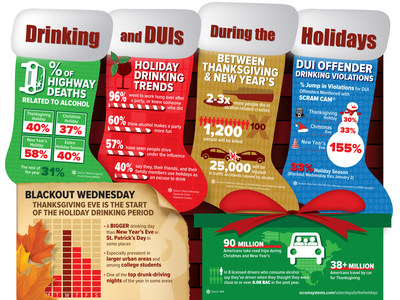Lately, a lot of advocates and researchers in public health have been throwing around the latest buzz word, ACEs. After doing a quick internet search for “ACEs”, I came across news headlines like “
Police, mental health team mobilize to reach kids witnessing violence” and “
Pediatricians Screen Parents for ACEs to Improve Health of Their Kids” So what are ACEs and why do they seem to be the next big public health urgency? ACEs are potentially traumatic events that occur prior to the age of 18. These childhood experiences range from physical, emotional, or sexual abuse to parental divorce, domestic violence, parental mental illness, or the incarceration of a parent or guardian. The
original study on ACEs took place from 1995 to 1997 by Kaiser Permanente with more than 17,000 participants. Participants completed a standardized physical exam and completed a survey with questions about childhood maltreatment, family dysfunction, and current health status and behaviors.
From this study, researchers developed a questionnaire to tally up an “ACE Score”, which is out of 10, and the questionnaire is available on the
ACE website, or below:
- Did a parent or other adult in the household often or very often…Swear at you, insult you, put you down, or humiliate you? Or act in a way that made you afraid that you might be physically hurt? If yes enter 1.
- Did a parent or other adult in the household often or very often... Push, grab, slap, or throw something at you? Or ever hit you so hard that you had marks or were injured? If yes enter 1.
- Did an adult or person at least 5 years older than you ever… Touch or fondle you or have you touch their body in a sexual way? Or attempt or actually have oral, anal, or vaginal intercourse with you? If yes enter 1.
- Did you often or very often feel that... No one in your family loved you or thought you were important or special? Or that your family didn’t look out for each other, feel close to each other, or support each other? If yes enter 1.
- Did you often or very often feel that... You didn’t have enough to eat, had to wear dirty clothes, and had no one to protect you? Or that your parents were too drunk or high to take care of you or take you to the doctor if you needed it? If yes enter 1.
- Were your parents ever separated or divorced? If yes enter 1.
- Was your mother or stepmother: Often or very often pushed, grabbed, slapped, or had something thrown at her? Or sometimes, often, or very often kicked, bitten, hit with a fist, or hit with something hard? Or ever repeatedly hit at least a few minutes or threatened with a gun or knife? If yes enter 1.
- Did you live with anyone who was a problem drinker or alcoholic or who used street drugs? If yes enter 1.
- Was a household member depressed or mentally ill, or did a household member attempt suicide? If yes enter 1.
- Did a household member go to prison? If yes enter 1.
Now add up your “Yes” answers. This is your ACE Score.
The original ACE study in 1997 found that of the 17,000 participants,
87% of those had more than one ACE score. And one thing to note: the majority of these participants were white, middle- and upper-middle class, and college educated. So despite the stereotype that abuse and neglect predominately happen in lower income families and families of color, this study highlighted that abuse and neglect occurs in all classes, income levels, and races.
I’ll admit, I have a few ACEs. And I definitely understand the struggle of coming to terms and dealing with these experiences. However, as I’ve dug deeper into this research, I’ve become more aware of how prevalent ACEs are and that my experiences aren't very unique. According to the
2011-2012 Wisconsin ACE Brief, 58% of Wisconsin residents have experienced at least one ACE, with 14% experiencing 4 or more. Here in Winnebago County, more than 20% of residents have four or more ACEs, which makes us one of 13 counties across Wisconsin with this high of a statistic. This is such a prevalent issue, and it's unsettling to learn about how pervasive across the lifespan these childhood experiences can be.
I think it's common knowledge that experiencing trauma can cause immediate and serious health effects. However, many studies are showing there are also long-term health effects of experiencing trauma as a child. According to the
CDC, adults with higher ACE scores are at higher risk for attempting suicide and developing depression, addiction, and other mental health issues. A 2014 study from the
American Journal of Preventative Medicine, also showed higher rates of chronic conditions, like asthma and obesity, along with higher risk of smoking, liver disease, and coronary heart disease.
 |
| Graphic courtesy of Veto Violence; click here for more graphics like this summarizing the ACE study |
With 58% of Wisconsin residents experiencing at least one ACE and all of these health outcomes being linked to childhood trauma, addressing ACEs and working to reduce its prevalence could have huge positive impacts down the line. Many public health experts are stressing the importance and urgency of focusing on the healthy development of infants, children, and families.
And if you've made it this far into my blog post, you're probably even more curious about ACEs and what to do about them. So quick plug: re:TH!NK has an upcoming workshop on ACEs!
What:
a re:TH!NK workshop:
ACE Interface Training
Understanding Adverse Childhood Experiences (ACEs):
Building Self-Healing Communities
Join us as we welcome two trainers from
Waupaca County Health & Human Services to provide this
free ACEs training!
When:
Monday, September 14 from 12:30pm-3:30pm
(Come after lunch or bring your own lunch!
Snacks and refreshments will be provided.)
Where:
Miron Construction, Wenzler Center
(1471 McMahon Drive, Neenah)
And I'd like to end on this: having multiple ACEs is not necessarily an end-all be-all. Having multiple traumatic experiences during childhood can significantly affect a person and may require a lot of healthy coping skills and support to get through. But there is such a thing as
resiliency. There are people who can go through terrible events and somehow make it out okay. With proper support and services, people who have gone through multiple ACEs can bounce back like a rubber band. And there is a lot of emerging research being done on resiliency. Just in case the ACE questionnaire has you feeling discouraged, take a look at this "resilience" questionnaire, developed by early childhood service providers, pediatricians, psychologists, and health advocates of Southern Kennebec Healthy Start, Augusta, Maine, in 2006, and updated in February 2013. (Note that this questionnaire's purpose is limited to parenting education. It was not developed for research.) How many of these can you answer "true" to?
Resilience Questionnaire: For each statement, mark the most accurate answer, from: Definitely True, Probably True, Not Sure, Probably Not True, and Definitely Not True.
- I believe that my mother loved me when I was little.
- I believe that my father loved me when I was little.
- When I was little, other people helped my mother and father take care of me and they seemed to love me.
- I’ve heard that when I was an infant someone in my family enjoyed playing with me, and I enjoyed it, too.
- When I was a child, there were relatives in my family who made me feel better if I was sad or worried.
- When I was a child, neighbors or my friends’ parents seemed to like me.
- When I was a child, teachers, coaches, youth leaders or ministers were there to help me.
- Someone in my family cared about how I was doing in school.
- My family, neighbors and friends talked often about making our lives better.
- We had rules in our house and were expected to keep them.
- When I felt really bad, I could almost always find someone I trusted to talk to.
- As a youth, people noticed that I was capable and could get things done.
- I was independent and a go-getter.
- I believed that life is what you make it.

Resiliency research and focus may be the key in addressing ACEs and their effects on a person's health across the lifespan. Ensuring that children are able to answer "true" to at least a few of the statements above is critical in ensuring that everyone can lead healthy, happy lives. So let's get to it! (And come to our workshop on Sept. 14 if you're interested!)

























